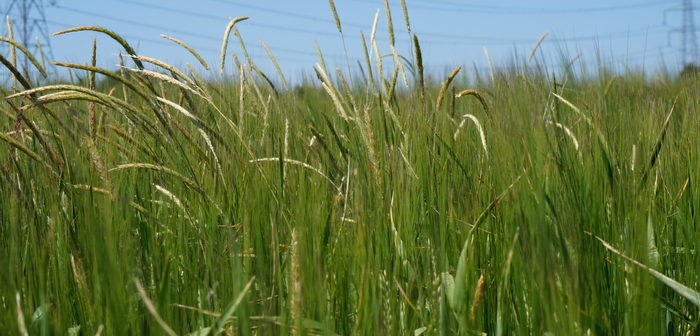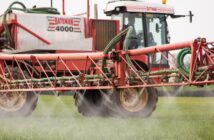As the early harvest gets underway, leading agronomy firm Hutchinsons urges growers to wait before cultivating fields affected by black-grass until there is sufficient moisture for weed seeds to germinate.
Any cultivation in very dry conditions, even shallow tillage for “stale seedbed” control, risks burying black-grass seed under the surface, where it will remain protected until there is enough moisture for germination, the firm’s Dick Neale warns.
“The most beneficial thing you can do when conditions are hot and dry is to leave black-grass seed on the surface after harvest to let it degrade naturally in sunlight. In most areas there’s simply not enough soil moisture for germination, and virtually no rain forecast, so any form of cultivation is likely to protect seed from the sun’s radiation until rain does arrive.
“We saw this happen in 2011 when a lot of black-grass got buried in dry soils and didn’t grow until the first significant soil wetting in November. As soon as the moisture came, black-grass emerged within crops and swamped them. Growers must learn from this to avoid a repeat.”
He acknowledges playing the waiting game can be hard in practice given pressures on workloads and uncertainty about when weather will “break”, but insists “phenomenal patience” will be essential for effective black-grass control this autumn.
Treat dormancy status with caution
Although warm, dry conditions during June and into July are likely to mean relatively low black-grass dormancy, typically favouring earlier autumn germination, this status is almost irrelevant when there is insufficient soil moisture, Mr Neale adds.
Even where there is moisture, peak black-grass emergence is between mid-September to the end of October, so there are still several months to go before the true extent of the threat to 2018/19 crops is known.
“Soils are very warm, so any significant rain in August or September is likely to spark a major flush of autumn-emerging black-grass. But remember, you still need to allow around three weeks for seeds to emerge, so don’t rush in. Many soils will easily take four inches of rain and still produce good seedbeds, so there’s no need to panic.”
Waiting for sufficient soil moisture is also vital for pre-emergence herbicides to work effectively, he says.
Long-term NIAB/ AHDB research shows around 160mm of rain is needed during September and October for optimum efficacy of residual chemistry. “Soil has to be wetted to a significant depth for residual herbicides to work well, but even when they do, control still only averages around 62% of plants.”
Plants that survive treatment are likely to be stronger, herbicide-resistant and produce more tillers, which must be considered when evaluating further controls and weed risk, he warns.
“We’ve seen at Brampton that plots with the highest percentage control of black-grass plants often have the highest population of heads, which tend to be from ‘super weeds’ that survive herbicide treatment and are capable of producing 25-30 tillers per plant.
“So even if you achieve 90% control of plants, that probably only gives you 60% control of heads given the weed’s ability to produce more tillers at lower plant populations.”
Protect soil
Acknowledging high straw prices may prompt more growers to bale and remove straw this summer, Mr Neale says that if there is sufficient soil moisture and relatively low black-grass pressure, it may be worth considering sowing a catch crop to protect bare stubbles and improve soil condition ahead of a following winter or spring-sown crop.
Fast-growing crops such as linseed, phacelia, oats or a legume provides surface protection, but the roots also play an equally, if not more vital role in improving soil structure and moisture management. This is particularly important where growers are looking to drill late in the season (or in spring) on heavy land, he says.
However, if conditions remain dry, catch crops are equally unlikely to germinate, so it will be better to cut stubbles slightly higher to provide some soil protection. “Don’t forget that winter oilseed rape volunteers are a ready-made catch crop and should be viewed as such with a termination date in late September when black-grass germination really gets going.”
Fundamentally though, Mr Neale says growers should not be looking to grow winter wheat on land where black-grass is a big problem and he reiterates the importance of using the “traffic light” system to determine cropping choices.
“Red” fields are where there is likely to be high levels of seed return this season and/ or a high seed number in the soil already. Winter wheat is generally unsuitable and the only real option for these fields is spring barley, he says.
In contrast, “green” fields are those where there is no seed return this year, yet there may still be black-grass seed in the soil from previous years that needs managing out. Such fields can go into winter crops, such as wheat, but growers should use all cultural and chemical options to further deplete the seed bank.
“This season will be one of the most difficult and complicated for black-grass control in many years, requiring phenomenal patience and a willingness to make big changes to the usual farm practices where necessary,” Mr Neale concludes.




